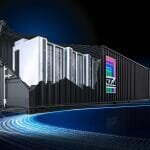Willsbridge Mill on the edge of Bristol is popular with dog walkers and historians alike. Constructed in 1792 and surrounded by the natural beauty of Willsbridge Valley, it attracts tourists from far and wide. Set in an isolated area far from the mains drains however, dealing with wastewater poses a challenge. When the old packaged pumping station at the site failed, Willsbridge Mill turned to Rotamec, who installed a green, cost-effective treatment system that removed the need for a pump altogether.
As an older listed building, Willsbridge Mill is not directly connected to mains drains. Usually, wastewater from a building directly enters the mains drains where it flows to pumping stations and onto treatment facilities. However, the mill was relying on a packaged pumping station buried underground. As wastewater entered a chamber, the system intermittently pumped the sewage 80 metres uphill so it could enter the mains drain outlet. When the pump failed, it was clear that a radical new alternative was required.
Located in a chamber underground, carrying out continued maintenance on the pump was time consuming and costly due to repetitive blockages. This sometimes resulted in unpleasant smells, which at a tourist hot spot like Willsbridge Mill, is not ideal. Furthermore, the substantial cost of having to empty the chamber of wastewater on a regular basis was becoming unsustainable for facility managers. To solve the issue, the local council approached Rotamec, a leading electromechanical service provider to the engineering sector, to propose a new treatment system.
Paul Pearce, Sales Director at Rotamec, carried out a site inspection to determine the best course of action: “The old pumping station consisted of a single-phase 230 volt powered submersible pump. The downside with these installations is not only reliability issues, but the energy consumption to pump the wastewater to the drains. These maintenance and operational issues translate to greatly increased costs – before we even consider emptying the tank regularly when the pump fails.
“A new system was needed. After assessing the visitor numbers at the site and its geography, I was convinced that a sewage treatment plant that harnessed the anaerobic digestive process would be an optimal solution.”
The system Paul proposed to the council removed the need for a pump altogether. Instead, sewage flows into an underground tank, where digestion by bacteria occurs. A low voltage air blower inside the tank circulates air around the clock to promote the growth of this bacteria and neutralise harmful substances in the sewage. Once digestion is completed after a period of weeks, the now treated water is then gravity fed back into the water table.
“These sewage treatment systems feature minimal moving parts, which greatly enhances reliability and reduces maintenance requirements. Typically, an annual inspection will suffice, compared to every few months with a pumping station. As the only powered aspect of the system is the low voltage air compressor, power consumption is also great reduced. These both provide substantial cost savings in operation. Furthermore, the end product is expelled water that is environmentally safe. We worked with the Environment Agency to ensure this. We built the system to adhere to the latest 2020 General Binding Rules regarding septic tanks. The result is a system that combines environmental friendliness and cost-effectiveness.”
With everything approved, Rotamec specified the appropriate equipment to build the system. Managing the entire project as a civil contractor, Rotamec teams then removed the old pumping station and installed the new sewage treatment system. This included all the necessary pipework, rediverting sewage to the new system and installing electrical connections for the fan. Once complete, the site was quickly cleared and ready for tourists. The risk of unwanted smells had been successfully eliminated.
“We are not just a specialist in motor rewinds and repairs, our capability runs deeper than that,” Paul continues, “we have a capable team who can tackle interesting applications and are familiar with the requirements of local councils and the function of these sewage treatment systems. Through close communication, we were able to deliver a system that works well, while meeting both the operational requirements of the council and the natural environment of the valley.”








